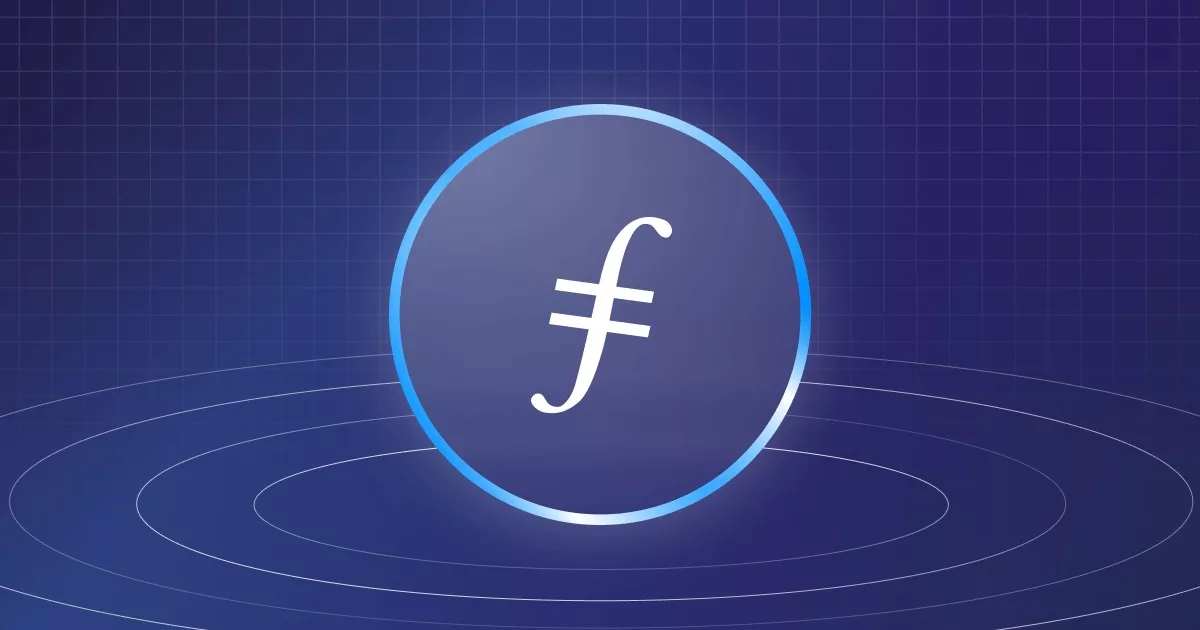
In today’s digital age, data storage, and management are becoming increasingly critical for individuals and businesses. But, centralized storage systems can be vulnerable to hacking, data breaches, and other security risks.
Enter Filecoin, a decentralized storage network that uses blockchain technology to create a secure, reliable, cost-effective solution for storing and managing data.
By leveraging the power of decentralized storage, Filecoin offers a new approach to data storage that is more efficient, scalable, and resilient than traditional cloud storage solutions.
This guide will explore the history, working mechanism, key features, limitations, and use cases of Filecoin, shedding light on this exciting and innovative project revolutionizing decentralized storage.
What is Filecoin (FIL)?
Filecoin (FIL) is a decentralized peer-to-peer (P2P) storage network and cryptocurrency that allows users to store, retrieve and share digital information in a secure, decentralized manner.
Filecoin aims to create a global market for storage services that are decentralized, efficient, and affordable.
The platform allows users to earn FIL tokens by renting out their unused storage space to other users who need it. This incentivizes users to contribute to the network’s storage capacity and helps to reduce the cost of storing and accessing digital data.
Filecoin uses blockchain technology to ensure the integrity and security of the stored data. It allows users to access their data anywhere in the world without relying on a centralized storage provider.
History of Filecoin
Filecoin was founded in 2014 by Juan Benet, a computer scientist and entrepreneur who had previously worked at companies such as Google, Microsoft, and Protocol Labs.
The project was first announced in a white paper published in 2014, which outlined the vision for a decentralized storage network that would allow users to store and share data in a secure and efficient manner.
The Filecoin project raised $257 million in an initial coin offering (ICO) in 2017, making it one of the largest ICOs. But, the platform’s development faced numerous delays and setbacks, leading to criticism and skepticism from some crypto community members.
Despite these challenges, the Filecoin team continued to work on the project.
In October 2020, the mainnet was finally launched, allowing users to use the platform to store and retrieve data. Since then, the platform has continued to grow and expand, with many users and developers building applications and services on top of the Filecoin network.
Today, Filecoin is considered one of the most promising decentralized storage networks in the crypto space, with the potential to disrupt the traditional cloud storage industry.
Working Mechanism
Filecoin is a decentralized peer-to-peer (P2P) storage network that allows users to store and retrieve digital information in a secure manner. It aims to create a global market for storage services that are decentralized, efficient, and affordable.
Below are the building blocks of the Filecoin ecosystem,
1. Storage Providers and Clients
Storage providers on the Filecoin network offer their unused storage capacity to users who need it. They are incentivized to do so by receiving FIL tokens in exchange for providing storage space.
The data is encrypted, divided into smaller pieces, and distributed across multiple storage providers on the network, making it more secure and resistant to attacks.
Clients are the ones who need storage space on the network and pay storage providers in FIL tokens for the storage space they use. Clients can retrieve their stored data from any storage provider on the network and pay them in FIL tokens for the bandwidth and storage capacity used.
2. Proof-of-Replication (PoRep)
Filecoin ensures the network’s decentralization using a Proof-of-Replication (PoRep).
Proof-of-Replication (PoRep) is a consensus mechanism used in distributed systems, such as blockchain networks, to ensure the integrity and availability of data.
In simple terms, it is a way to prove that a copy of data exists and is stored in a specific location.
The PoRep mechanism requires a node in the network to prove that it has replicated a piece of data by storing it in multiple locations. This is done by creating a challenge-response system, where the node is challenged to provide proof that it has stored the data correctly.
The node must respond with cryptographic proof demonstrating it has replicated the data in a specific location, verified by the other nodes in the network.
This mechanism is important because it ensures the data is not lost or corrupted. It also helps prevent attacks on the network, such as Sybil attacks, where an attacker creates multiple fake identities to gain network control.
3. Proof-of-Space-Time (PoST)
The Filecoin network incentivizes storage providers to store data correctly and maintain their storage capacity by using a Proof-of-Space-Time (PoST) consensus mechanism, which rewards storage providers who can prove that they are storing the data correctly.
In simple terms, it is a way for nodes in the network to prove that they have allocated a certain amount of storage space for a specific period of time.
The PoST mechanism requires nodes to prove that they have allocated a certain amount of storage space for a specific period by solving a cryptographic puzzle. The puzzle is designed so that it is easy to verify the solution but difficult to solve. This prevents attackers from cheating the system by pretending to have allocated storage space they haven’t used.
The PoST mechanism is important because it provides a way to ensure that the network is secure and that transactions are processed fairly.
By leveraging the power of blockchain technology, the platform offers a more secure, transparent, and decentralized alternative to traditional cloud storage services.
Key Features
Here are some key features of Filecoin,
1. Decentralized
Filecoin is a decentralized peer-to-peer (P2P) storage network that allows users to store and retrieve digital information securely and in a decentralized manner.
2. Security
Filecoin uses advanced encryption techniques and distributes data across multiple storage providers on the network, making it more secure and resistant to attacks.
3. Efficiency
Filecoin uses a Proof-of-Space-Time (PoST) consensus mechanism to ensure that storage providers are actually storing the data they claim to be stored, making the network more efficient and reducing the risk of fraud.
4. Affordability
Filecoin aims to provide affordable storage solutions to users by leveraging unused storage capacity on the network and creating a competitive market for storage services.
Limitations
Like any technology, Filecoin has its limitations, and some of these include,
1. Technical Complexity
Filecoin is a complex technology that requires specialized knowledge to use and deploy, making it less accessible to the average user.
2. Storage Capacity
While Filecoin incentivizes storage providers to offer their unused storage capacity, there is still a limit to the amount of storage available on the network, which could limit its growth in the long term.
3. Network Adoption
The success of Filecoin depends on the network’s adoption by many users and storage providers, which is not guaranteed.
Use Cases
Filecoin has a variety of use cases across different industries and sectors, some of which include,
1. Decentralized Cloud Storage
Filecoin provides a decentralized alternative to centralized cloud storage services, which can be more secure, affordable, and efficient.
For example, Filecoin can securely archive large amounts of data, such as scientific research, historical records, or digital media, which can be accessed anywhere.
2. Content Delivery Networks (CDN)
Filecoin can be used to create decentralized content delivery networks, which can provide faster and more reliable access to digital content.
3. Gaming
Filecoin can store and distribute gaming assets, such as game levels, characters, or items, which can be accessed anywhere in the world.
Conclusion
Filecoin is a groundbreaking project changing how we think about data storage and management.
By offering a decentralized solution that is secure, reliable, and cost-effective, Filecoin is paving the way for a more decentralized and democratic internet. Its unique combination of blockchain technology, encryption, and redundancy techniques provides an unparalleled level of data privacy, security, and accessibility that is not possible with centralized storage solutions.
The need for secure and scalable storage solutions will only grow as the world generates and relies on more data. With Filecoin, individuals and businesses can rest assured that their data is safe, accessible, and secure.
The future of decentralized storage looks bright, and Filecoin is at the forefront of this exciting and transformative movement.
FAQs
1. What is the role of mining in Filecoin?
Mining in Filecoin plays a crucial role in the decentralized storage network.
Miners are responsible for storing and retrieving data on behalf of clients and are incentivized with FIL tokens for their work. They use their own storage capacity and computational resources to provide storage space to the network and are rewarded for their contributions based on their performance and reliability.
2. How is data privacy ensured on the Filecoin network?
Filecoin uses encryption and redundancy techniques to ensure data privacy and security on the network.
Data is encrypted before being stored on the network, and multiple copies are stored in different locations to prevent loss or corruption.
Only the data owner can access the decryption keys, ensuring their data remains private and secure.
3. How can Filecoin be used in the real world?
Filecoin can be used in the real world for various applications, such as decentralized cloud storage, data archiving, content delivery networks, gaming, and supply chain management.
For example, businesses can use Filecoin to securely store and share sensitive data, such as financial records or customer information.
Content creators can use Filecoin to distribute digital content, such as music or videos, without relying on centralized platforms. And gamers can use Filecoin to store and trade in-game assets, such as characters or weapons.





